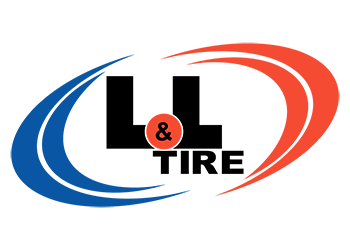Many vehicle owners come into L&L Tire wondering whether they really need new tires. There are a few indicators that should be viewed as red flags that catch the attention of drivers.
The Age Of The Tires
Tires are exposed to a variety of natural elements and consistent driving creates inevitable wear and tear. The conditions that you drive in along with your driving frequency will determine the lifespan of your tires. Most vehicle manufacturers state that tires should be replaced within six years of purchase. Tire manufacturers push the timetable out a bit further at ten years. Ask the experts at L&L Tire for their take on how much longer your tires will be good for.
Tread Depth
If your vehicle’s tires have a tread level of less than 1/16 of an inch, you desperately need new tires. Driving with even 1/8 of an inch is a bit dangerous on wet and slick roads. Simply put, it’s not worth the risk. Be proactive and buy a gauge to determine your tires’ tread levels just like a professional. Or, take a few moments and grab a penny to determine your tires’ tread. Insert the penny with the head side down into your tires’ tread. If you can see Abe Lincoln’s full head, you have determined that your tire does not have sufficient tread.
Tread Wear Indicator Bar
Contemporary tires have a convenient tread wear indicator bar that is installed right into the tires. The bar is hardly visible when the tire is new, but over time it eventually starts to appear when the tire tread begins to deteriorate. The bar looks like a flat piece of rubber that extends across the tire’s tread. Once a driver sees one or more of these on the tire, the tread is too low for safe travels. You’ll notice this in the moist tracks that your vehicle’s tires create when passing through a puddle. If you spot these tread wear indicator bars,, double check the tread depth with the penny method outlined above. If it looks like your tires have an unsafe amount of tread, give L&L Tire a call right away.
Sidewall Cracks
Drivers should be aware that there are problems with tires that will manifest in areas besides the tread. Issues can also be spotted in the tires’ sidewalls. You will be happy to know that you can check out your tires’ sidewalls with a quick visual inspection. Just take a look for any cuts or tracks in the grooves of the tires’ sidewalls. If you see any, it is an indicator that the tire has started to leak or that it could soon blow out. Bring your vehicle into L&L Tire right away for a repair or replacement.
Noises and Vibrations
While drivers usually feel some normal vibrations during the typical car ride, vibrations to a heightened extent mean that there is something wrong with the tire or vehicle. Tires that are poorly balanced or improperly aligned will cause a significant vibration. Vehicles with old shock absorbers that are nearing the end of their lifespans will also vibrate. Or, there could be an important issue within the tire. Sometimes the noise and vibration stems from another part of the vehicle that could impact tires in the near future, so don’t wait for the problem to impact other parts of the vehicle. Take the short trip to an L&L Tire location to determine the true cause of the vibration.
